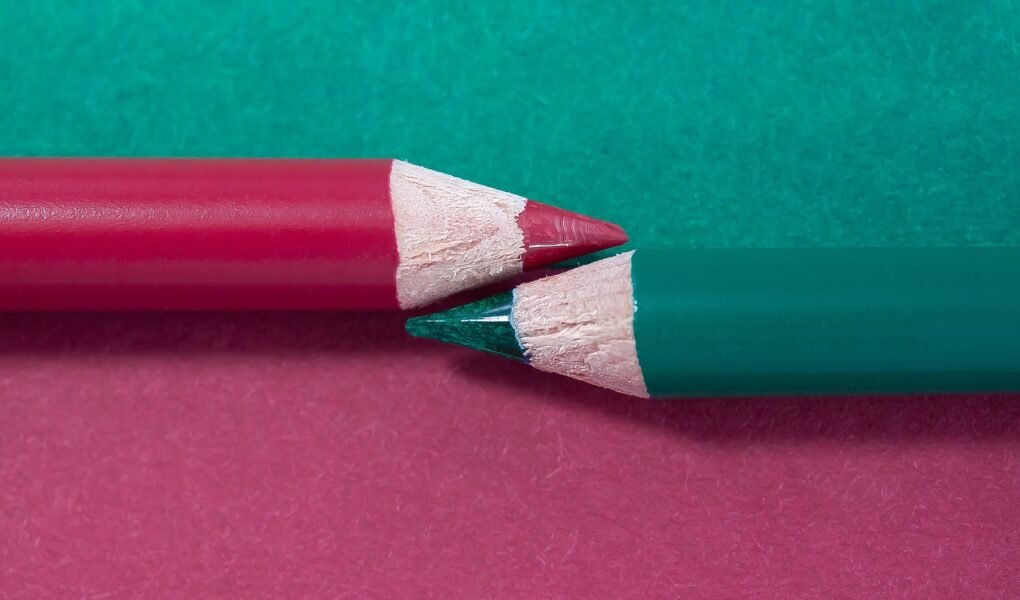Understanding color relationships is crucial for creating visually appealing designs. Among the most important concepts in color theory are analogous and complementary colors. This comprehensive guide will explore these color relationships, their applications, and how to use them effectively in your designs.
Understanding Color Fundamentals
The Color Wheel Basics
The color wheel serves as the foundation for understanding color relationships. Created by Sir Isaac Newton in 1666, it arranges colors in a circular pattern that helps visualize how different hues relate to each other. The traditional color wheel consists of 12 colors, including primary, secondary, and tertiary colors.
Color Theory Foundation
Color theory provides a framework for understanding how colors interact and how we perceive them. The basic principles include:
- Primary colors (red, blue, yellow)
- Secondary colors (green, orange, purple)
- Tertiary colors (yellow-green, blue-green, etc.)
- Color temperature (warm vs. cool)
- Color properties (hue, saturation, value)
Color Relationships Explained
Colors interact with each other in various ways, creating different harmonious relationships. These relationships form the basis for color schemes used in design, art, and everyday applications. Understanding these relationships helps create more effective and appealing color combinations.
Analogous Colors In-Depth
What Are Analogous Colors?
Analogous colors are groups of three to five colors that sit next to each other on the color wheel. For example, yellow, yellow-green, and green form an analogous color scheme. These colors naturally harmonize and create a serene, comfortable viewing experience.
How to Identify Analogous Colors
To find analogous colors:
- Choose your base color on the color wheel
- Look at the colors directly adjacent to it
- Select 2-4 neighboring colors
- Ensure the colors flow smoothly from one to the next
Using Analogous Colors Effectively
To make the most of analogous color schemes:
- Use one color as the dominant hue
- Choose a second color for support
- Use the third color for accents
- Maintain consistent saturation levels
- Consider using varying tints and shades
Pros and Cons of Analogous Schemes
Advantages:
- Natural, harmonious appearance
- Easy to create
- Calming and pleasing to the eye
- Professional and sophisticated look
Disadvantages:
- Can lack contrast
- Might appear monotonous
- Limited color variety
- May need additional contrast for emphasis
Complementary Colors Explored
Definition of Complementary Colors
Complementary colors are pairs of colors that sit opposite each other on the color wheel. These combinations create maximum contrast and visual impact. Common complementary pairs include:
- Red and green
- Blue and orange
- Yellow and purple
- Cyan and red
- Magenta and green
Finding Complementary Pairs
To identify complementary colors:
- Select your base color on the wheel
- Draw a straight line through the center
- The color opposite your base color is its complement
- Consider tints and shades of these colors for variety
Applications in Design
Complementary colors are widely used in:
- Logo design for strong visual impact
- Website design for call-to-action buttons
- Marketing materials for emphasis
- Art for creating focal points
- Photography for dynamic compositions
Benefits and Challenges
Benefits:
- Creates strong visual contrast
- Draws attention effectively
- Produces vibrant designs
- Makes elements stand out
Challenges:
- Can be overwhelming if overused
- Might create visual vibration
- Requires careful balance
- Can be difficult to harmonize
Practical Applications
Digital Design Uses
In digital design, analogous and complementary colors serve different purposes:
Analogous:
- Background gradients
- UI element groups
- Navigation menus
- Content sections
Complementary:
- Call-to-action buttons
- Important alerts
- Highlighting critical information
- Creating visual hierarchy
Print Applications
Print design requires special consideration for both color schemes:
Analogous:
- Magazine layouts
- Book covers
- Brochures
- Corporate documents
Complementary:
- Promotional posters
- Advertisement design
- Package design
- Logo development
Interior Design Implementation
Both color schemes find important uses in interior design:
Analogous:
- Creating peaceful rooms
- Coordinating furnishings
- Wall color transitions
- Textile selections
Complementary:
- Accent walls
- Decorative elements
- Artwork selection
- Focal point creation
Fashion and Art Applications
Fashion and art utilize these color relationships effectively:
Analogous:
- Creating cohesive outfits
- Seasonal collections
- Landscape paintings
- Abstract art
Complementary:
- Statement pieces
- Pattern design
- Portrait backgrounds
- Pop art
Advanced Color Combinations
Split-Complementary Schemes
Split-complementary schemes use a base color and the two colors adjacent to its complement. This creates high contrast while being more sophisticated than straight complementary pairs.
Double Complementary Patterns
Double complementary schemes use two complementary pairs together. This creates a rich, vibrant palette but requires careful balance to avoid overwhelming the viewer.
Combining Analogous and Complementary
Advanced designers often combine both approaches:
- Use analogous colors as the base scheme
- Add complementary accents for emphasis
- Balance the intensity of each color
- Create depth through layering
Conclusion
Understanding analogous and complementary colors is essential for creating effective designs. While analogous colors create harmony and flow, complementary colors provide contrast and impact. The key to successful design lies in knowing when and how to use each type of color relationship effectively.
FAQ
- Which is better: analogous or complementary color schemes?
Neither is inherently better; each serves different purposes. Analogous creates harmony, while complementary creates contrast and impact. - How many colors should I use in an analogous color scheme?
Typically, 3-5 adjacent colors work best. Using too many can dilute the harmonious effect. - Can I use both analogous and complementary colors in one design?
Yes, but carefully. Often, designers use analogous colors as the main scheme with complementary colors as accents. - Why do complementary colors sometimes appear to vibrate?
This visual effect occurs due to the maximum contrast between complementary colors, especially at full saturation. - How can I make sure my color combinations work well together?
Test your combinations in different contexts, consider your audience, and ensure sufficient contrast for readability while maintaining harmony.



